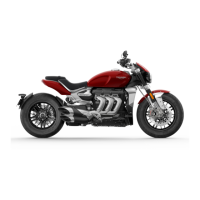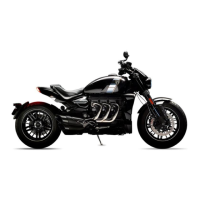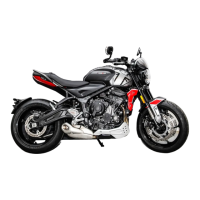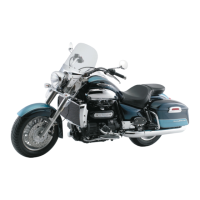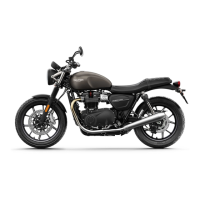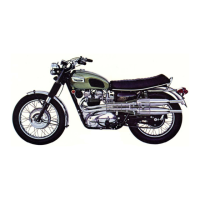SUPPLEMENTARY INSTRUCTIONS
With the exception of the
3T
engine, which will be referred to separately, the
instructions in the main body of the Instruction Manual may be applied to
all
machines
from
1945
to
the present day.
With
the aid of this supplement and the accompanying
data sheet, no difficulty will be found in selecting the instructions for any individual
machine.
Some of the more important changes during this time are as follows: The Mk.
1
spring wheel was introduced in
1948
and together with the Mk.
2
wheel, which
was introduced in
1951.
may be fitted
to
any of the rigid frame machines.
A
modified
gearbox was introduced in
1950,
with the speedometer drive taken from the timing
side end of the layshaft, and although
similar
in construction the parts of the gearbox
are not interchangeable with the previous model. Where earlier models are fitted
with a spring hub the speedometer drive
is
taken from
a
pinion behind the final
drive sprocket.
Models previous to
1949
have the orthodox telescopic fork, for which the servicing
instructions are the same
as
the Trophy fork in the accompanying Instruction Manual,
but in
1949
the nacelle was introduced containing
a
6"
diameter headlamp. Also
in
1949
the oil pressure gauge was dispensed with,
as
the instrument panel in the
fuel tank was no longer fitted, and an
oil
pressure indicator button on the timing
cover substituted. The return of the
oil
from the overhead rocker gear on the
elrlier models
is
by internal oil ways in the cylinder head and block, but in
1949
external
oil
drain pipes were fitted from the cylinder head to the push rod cover
tubes.
An S.U. Carburetter was fitted to the Thunderbird for
1952,
and this necessitated
an eye in the saddle tube for the air filter connection, this frame being used on all
models up to the introduction of the swinging arm frame.
In
1952
the nacelle was
changed to accommodate a
7"
diameter headlamp, incorporating
a
prefocus light
unit. At the same time (from engine number
19706
NA) the electrical system was
changed
to
POSITIVE EARTH wiring.
Tappet
Adjustment.
All machines with cast iron cylinder heads and barrels
previous to engine number
37560
should be used with a tappet clearance of
,001"
(see page
37,
para. a.), and machines with alloy cylinder heads and barrels previous
to
engine number
37560
should be used with a tappet clearance of
,002"
inlet and
.004"
exhaust.
In
1953
quietening ramps were added to the camshafts, and
all
machines from engine
number
37560
with an identification mark on the drive side crankcase next to the
engine number, must be used with tappet clearance of
,010".
Use of a smaller
tappet clearance with these particular camshafts will result
in
the valves being burnt
out.
A
major change took place in
1953
when the Speed Twin was fitted with the Lucas
RM.12
AC/DC
lighting equipment. Following the experience gained with this
generator the improved RM.14 type was fitted to the Speed Twifi and also the
Thunderbird for the
1954
season.
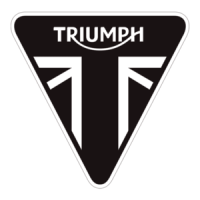
